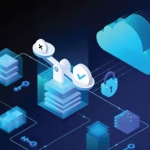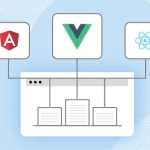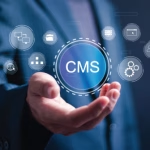A headless CMS is a content management system that separates the backend content repository (where content is stored and managed) from the frontend presentation layer (where content is displayed to users). This decoupling allows for greater flexibility and facilitates omnichannel content delivery.
Here are some benefits of using a headless CMS:
Content Flexibility

Content flexibility is a significant advantage offered by headless CMS systems.
Here’s a deeper dive into what it means and why it’s beneficial:
Structured Content: Headless CMS allows content to be structured in a way that’s independent of presentation. Content creators can define content models with various fields, types, and relationships, making it more adaptable to different use cases. For instance, a single piece of content could contain text, images, video, metadata, and more, all managed within the CMS.
Adaptability to Various Channels: As content is decoupled from its presentation layer, it can be repurposed and delivered across different platforms, devices, or interfaces without the need for extensive modifications. Content can be optimized for websites, mobile apps, IoT devices, voice interfaces, or even emerging technologies without reworking the core content.
Omnichannel Content Delivery
Omnichannel content delivery refers to the ability to deliver content seamlessly across various channels and devices while ensuring a consistent and unified user experience.
Here’s a closer look at the concept and the benefits it offers:
Consistency Across Platforms: With omnichannel content delivery, users experience a consistent brand message and quality content regardless of the device or platform they are using. Whether it’s a website, mobile app, social media, IoT device, or any other channel, the content maintains a cohesive look and feel.
Enhanced User Engagement: Delivering content across multiple channels enables users to engage with the brand on their preferred platform or device. This increased accessibility and convenience can lead to higher user engagement and satisfaction.
Adaptation to Diverse User Behaviors: Different users prefer different channels or devices to access content. Omnichannel delivery ensures that content is optimized for each channel, taking into account the unique user behavior, context, and requirements of that specific platform.
Ease of Integration

The ease of integration is a significant advantage of headless CMS that facilitates seamless connectivity with various third-party systems, applications, and tools.
Here’s a breakdown of the benefits and aspects related to integration with headless CMS:
API-First Approach: Headless CMS platforms are built with an API-first architecture, providing robust and well-documented APIs (such as RESTful APIs or GraphQL) that allow easy integration with other systems. This allows developers to access content and functionality programmatically, enabling smooth communication between the CMS and external applications.
Flexibility with Third-Party Tools: Headless CMSs can integrate with a wide range of third-party tools and services, including but not limited to eCommerce platforms, marketing automation tools, CRM systems, analytics solutions, email marketing software, and more. This integration capability enables a holistic approach to managing content and leveraging the functionalities of different tools simultaneously.





